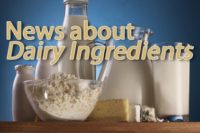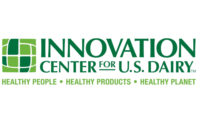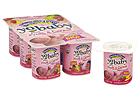
DHA and EPA are increasingly being added to dairy foods designed for babies and young children. This is because these omega-3s are necessary for proper growth, particularly for neural development and maturation of sensory systems.
Dairy Foods talked to:
Ruben Abril, director, ingredient commercialization, MartekMike Buttshaw, national sales and marketing manager, specialty products division, Hormel Foods
Lori Covert, vice president, marketing and communications, Ocean Nutrition Canada Ltd.
Diane-Louise Hnat, senior marketing manager, new business development, North America, DSM Nutritional Products Inc.
Patrick Luchsinger, marketing manager, North America, Lipid Nutrition
Valerie Sanders, food applications scientist, OmegaPure
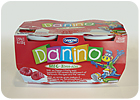
DHA and EPA are increasingly being added to dairy foods designed for babies and young children. This is because these omega-3s are necessary for proper growth, particularly for neural development and maturation of sensory systems.
Research suggests that not all fats are created equal, particularly when it comes to heart health. In fact, it is well established that dietary omega-3 polyunsaturated fatty acids are involved in health promotion and disease prevention, particularly the omega-3s traditionally derived from marine sources: docosahexaenoic acid (DHA) and eicosapentaenoic acid (EPA). These omega-3s are also needed for proper growth in fetuses, infants and children, particularly for neural development and maturation of sensory systems.
In September 2004, FDA made available a qualified health claim for reduced risk of coronary heart disease on conventional foods that contain DHA and EPA. Since then, numerous products enhanced with DHA and EPA have rolled out into the marketplace. The claim on labels reads: Supportive but not conclusive research shows that consumption of EPA and DHA omega-3 fatty acids may reduce the risk of coronary heart disease. One serving of [name of food] provides [x] grams of EPA and DHA omega-3 fatty acids. [See nutrition information for total fat, saturated fat and cholesterol content.]
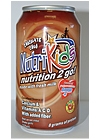
DHA and EPA are increasingly being added to dairy foods designed for babies and young children. This is because these omega-3s are necessary for proper growth, particularly for neural development and maturation of sensory systems.
Alpha-linolenic acid (ALA), another omega-3, is found in plant-derived components such as flaxseed, dark green leafy vegetables and certain vegetable oils. ALA is described as an essential fatty acid, and can be converted in the human body to DHA and EPA. However, the efficiency of the conversion process from ALA to DHA and EPA varies by consumer, diet and other factors. Thus, consuming DHA and EPA directly is best for the body, as the FDA claim suggests.
This can be quite challenging, as most consumers are not willing to increase their intake of fatty fish, which is the primary source of DHA and EPA. Fish obtain omega-3s by consuming algae. Because omega-3s are fatty acids, they are concentrated in fish that are fatty.
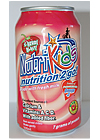
DHA and EPA are increasingly being added to dairy foods designed for babies and young children. This is because these omega-3s are necessary for proper growth, particularly for neural development and maturation of sensory systems.
In fact, according to the hot-off-the-presses Packaged Facts reportOmega-3s in U.S. Foods and Beverages, all types of omega-3-enhanced products have started rolling out into the mainstream marketplace. “Initial sales figures suggest they are making their way into consumers’ homes, and consumers are making repeat purchases,” says Publisher Don Montuori. Packaged Facts predicts that by 2011, retail sales of foods and beverages enriched with omega-3s will reach more than $7 billion. “Dairy foods are one of the larger segments in the omega-3-enhanced business. And, if you break down the business by foods and beverages enhanced with DHA and EPA, as compared to ALA, dairy is the leader,” Montuori says.
Now it’s time to read what the suppliers of DHA and EPA have to say about enriching dairy foods with these omega-3s.
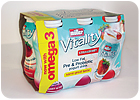
Omega-3s complement the health and wellness halo surrounding cultured dairy foods containing pre- and probiotics.
Dairy Foods: Why are dairy foods the ideal carrier for DHA and EPA omega-3s?
Abril:Dairy foods have the aura of being good-for-you. They deliver essential nutrients to consumers.Sanders:Because dairy foods are typically refrigerated or frozen, these lower temperatures help protect the polyunsaturated fat against oxidation during storage over time. Furthermore, milk proteins have been shown to provide added protection against oxidation in food products that have been fortified with omega-3s. Dairy foods can also be easily flavored to help mask any off-odors or flavors that may develop over time.
Buttshaw:Dairy foods have been targeted as having a high opportunity or potential for growth in the omega-3 fortification business. One of the reasons is that most dairy foods provide the “minimal fat basis” needed to more easily incorporate the omega-3 oils. Yogurt, in particular, has been a primary medium for carrying probiotics and we feel this kind of exposure and footprint will be important as we work to find new opportunities to proliferate healthy functional food ingredients such as omega-3s.
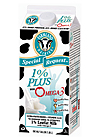
Farmland Dairies LLC educates consumers about the benefits of omega-3s on a product-specific website, as well as on milk cartons.
Dairy Foods: At what point in the manufacturing process of dairy foods are DHA and EPA omega-3s added?
Sanders:Regardless of the type of dairy food you are looking to fortify, there are two important things to keep in mind when adding omega-3s. First, the omega-3s should be added as close to the end of the process as possible. By doing so, the oil comes into minimum contact with pro-oxidants such as heat, light and air. Second, if applicable, blend the omega-3 oil with any other existing fat in the product before adding to the process. Blending omega-3 oils with other sources of fat increases thermal stability of the oil, providing added protection, or a buffer, during processing.Covert:In general, omega-3 powders are added to milk prior to pasteurization. They can also be added with another ingredient. For example, omega-3 powder can be blended into the flavoring system, such as the fruit prep in yogurt, and then added to the dairy food.
Abril:It is best to add omega-3s as close as possible to the end of the process in order to minimize exposure to high temperatures. In the case of natural cheese production, add the oil to a small portion of the milk and disperse with high shear and then add it to the rest of the milk as it is pasteurized. This helps with the dispersion of the oil into the whole batch. Alternatively, the oil can be introduced using in-line mixers, if available. The final option is to mix the oil with the curd, but care must be taken since salt is a pro-oxidant and, as such, creates problems. The oil can be pre-mixed with a small portion of the curd and then added back to the whole. This approach is used in companies that have closed systems and re-use the whey or whey cream, since some (2% to 5%) oil will be lost to the whey.
Sanders:With fluid milk, omega-3 oil should be added as an emulsion. It can withstand HTST and UHT processing. When adding omega-3 oil to a yogurt, it is best to use an emulsion or a combination of emulsifiers. The oil should be added directly before homogenization and pasteurization. With processed cheese and fat spreads, you first need to blend the omega-3 oil with the other oils within the system and then process as normal. Ice cream is an excellent fortification vehicle. The omega-3 oil should be combined with an emulsifier and be added to the fluid milk portion when the product is cooling, then process as normal.
Hnat:We have a fully prepared sterile emulsion that is available in Europe. This can be dosed in with special equipment after the heating stage. This is ideal for aseptic dairy products.

Omega-3-enhanced dairy foods are gaining notoriety all around the world.
Dairy Foods: What are the issues associated with fortifying dairy foods with DHA and EPA omega-3s and how are these issues overcome?
Abril:Dairy foods are probably the easiest foods to successfully fortify with omega-3s because of their shorter, refrigerated shelflife, as compared to long-shelflife, ambient temperature foods. The major issue resides in how to incorporate the oil using the existing processing equipment in some dairy plants.Hnat:Using the highest-quality omega-3 oils and powders helps assure finished product quality. One would expect the starting fish oil, for example, to at least meet, if not exceed the Council for Responsible Nutrition voluntary monograph standards. For powders, subsequently, low-surface area protects against early oxidation; some companies also will use masking flavors in the fish oils or in the finished products.
Luchsinger:The highly unsaturated structure of omega-3 oils renders them highly susceptible to oxidation, which is often detected by a fishy smell (in marine-sourced products) or oil paint scent in oxidized flaxseed oil. Microencapsulation provides additional protection against oxidation and premature deterioration, while also mitigating the fishy taste and smell. Our microencapsulated powder products include the carbohydrate mannitol, which is used to improve stability and prevent the smell of fish oil when in powder form.
Covert:The challenges with adding omega-3s to dairy products are the chance of developing off flavors and oxidation. However, the Powder-loc double shell technology prevents the fish oil from being exposed to the food, so there is no off flavor. Oxidation can also be reduced by using a packaging material that has a good oxygen barrier.
Sanders:It is important to always handle the omega-3 oil properly. It should be stored unopened either frozen or refrigerated until ready to use. You first need to examine your product from formula to packaging to storage and see where oxidation could occur. As with any polyunsaturated fatty acid you should minimize excessive exposure to heat, light, air and metals. Packaging should minimize exposure to the atmosphere and light. Using encapsulated vitamin and mineral packages can also help prevent oxidation caused by metals. Depending on the particular product, additional antioxidants and/or chelators can be added to provide increased stability over time. A variety of flavor systems compliment the usage of omega-3s by aiding in the masking of any off-notes that may develop over the life of a product.
Abril:In the case of fluid milk, it is very important to consider the effects of light oxidation. It is best to use cardboard containers or ultraviolet light-blocking plastic containers.
Hnat:To reduce the chance of oxidation in fresh milk products, we suggest that all equipment be free of metal ions such as copper and iron, which can produce off flavors. It is also strongly recommended that the antioxidant sodium ascorbate be added to the milk before de-creaming. Avoid any incorporation of air into the milk, check the centrifugal pumps and connections whether they are tight. De-aerate the milk in the sterile tank for one hour before pasteurization and homogenization. Fill storage, buffer and sterile tanks from the bottom. Flush the balance tank of the filling machine with nitrogen.
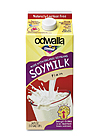
As often, what works in cows milk works in soy. This is true for omega-3s.
Dairy Foods: Please tell readers a bit about your company's DHA and EPA omega-3 ingredients.
Buttshaw:Our omega-3 is based on ultra-purified fish oil and comes in oil and powder forms. It is free from fishy odors and tastes, and provides for reduction in gas discomfort after consumption. All of the impurities are essentially removed through a proprietary process.Hnat:Our long-chain omega-3 ingredients-Ropufa-are typically derived from Pacific Ocean fish. Kosher ingredients are available. Both our standard fish body oils (30% EPA and DHA) and our concentrates as ethyl esters (60% EPA and DHA) go through proprietary neutralization and deodorization steps, which includes inclusion of a patented antioxidant cocktail.
Abril:Our DHA omega-3 is derived from an all-natural, non-GMO, sustainable resource-algae-which is nature’s own original source. Fish are also a source of DHA but what most people don’t know is that fish do not produce their own omega-3s; they obtain these nutrients by eating algae. We do not chemically or enzymatically modify our DHA, which is named life’sDHA. We grow huge quantities of algae in a completely contained and controlled environment. The DHA omega-3 oil that the algae naturally produces is processed in the same manner as any commercially available vegetable oil. We also can microencapsulate our DHA oil so that it becomes a more stable, free-flowing product for applications where a powder works better.
Covert:Our MEG-3 Omega-3 EPA/DHA ingredients are derived from fish oil, mainly sardines and anchovies, which are a by-product of the fishmeal industry in South America. This crude oil is very pure, but we further refine it to meet the highest purity standards. The oil must pass more than 200 quality checks before it is released from the facility and transported to our microencapsulation plant where it is microencapsulated using our patented Powder-loc technology. This technology is unique as it provides double-shell protection, which means that each oil droplet not only has its own protective shell, but all the single shells are then grouped together and protected in a second shell. This process locks in the health benefits of omega-3 and locks, even the slightest hint of fishiness, out of the food. The end ingredient is a free-flowing, dry powder with a consistency similar to flour.
Sanders:Our omega-3 ingredient is OmegaPure, a refined menhaden oil. Wild caught menhaden fish are harvested and processed to obtain crude menhaden oil, which is then highly refined and deodorized in our state-of-the-art fish oil refinery, which came on-line in 2005. We are a vertically integrated company, allowing us to carefully control the quality of the oil during each step of processing. OmegaPure EPA to DHA ratio is typically 1:1 and the oil is certified kosher.
Luchsinger:The Marinol line includes both oils and powders with varying levels of EPA and DHA. All are based on fish oil. For example, Marinol C-38 Fish Oil is concentrated natural fish oil in a triglyceride form. The EPA percentage is 23% and the DHA percentage is 16%. Marinol D-40 Fish Oil has a very high DHA content (41%) in a triglyceride form. It also has 6% EPA.
Hnat:We have developed a patented instrumental sensory evaluation system called the FAST (Fatty Acid Smell and Taste) index. We use it to continuously evaluate the quality of our oils. We also conduct descriptive profile analysis by a highly recognized external panel. To educate consumers, we sponsor both a technical and consumer-education website:www.fatsoflife.com.
Sidebar: Group's Focus to Differentiate and Educate
A group of international companies have come together to form a new omega-3 trade association called the Global Organization for EPA and DHA Omega-3 (GOED Omega-3). This not-for-profit trade association is committed to increasing the market and regulatory approvals for EPA- and DHA-based products, developing EPA and DHA consumer awareness and education strategies, and implementing quality standards and other measures that will protect the omega-3 EPA and DHA category.GOED Omega-3 is comprised of EPA and DHA omega-3 industry processors, refiners, manufacturers, distributors, marketers and retailers, as well as secondary associates and other interested parties including healthcare professionals, educators and researchers.
Based on the commitment from the initial 12 founding members, an office for the trade association opened in Salt Lake City.
The founding members were previously members of the CRN Omega-3 Working Group, which has been dissolved in favor of the new trade association. The new association will build on the accomplishments of the old Working Group including its product quality focus and industry acceptance of the voluntary omega-3 monograph and take on a broader mandate more suited to a trade association.
At an October meeting in Las Vegas, the association elected the following members to its Board of Directors: Philip Fass (Martek Biosciences), Thomas Grys (Denomega), Baldur Hjaltason (EPAX), Ian Newton (Ceres Consulting), Robert Orr (Ocean Nutrition Canada), Bob Rasmus (Lipid Nutrition), Olav Sandnes (Marine Nutraceuticals), David Shannon (Croda Inc.) and Richard Weis (OmegaPure). In addition, Orr was elected chairman and Grys vice chair. There is also a Technical Committee consisting Bjorn Rene (Napropharma) and Diane-Louise Hnat (DSM).
“We’re excited about the mandate that our members have given us and we’re looking forward to creating a framework for the global organization that will allow us to promote the awareness of the many health benefits of EPA and DHA omega-3s and effectively address the global dietary deficiency of these essential nutrients,” says Orr.
